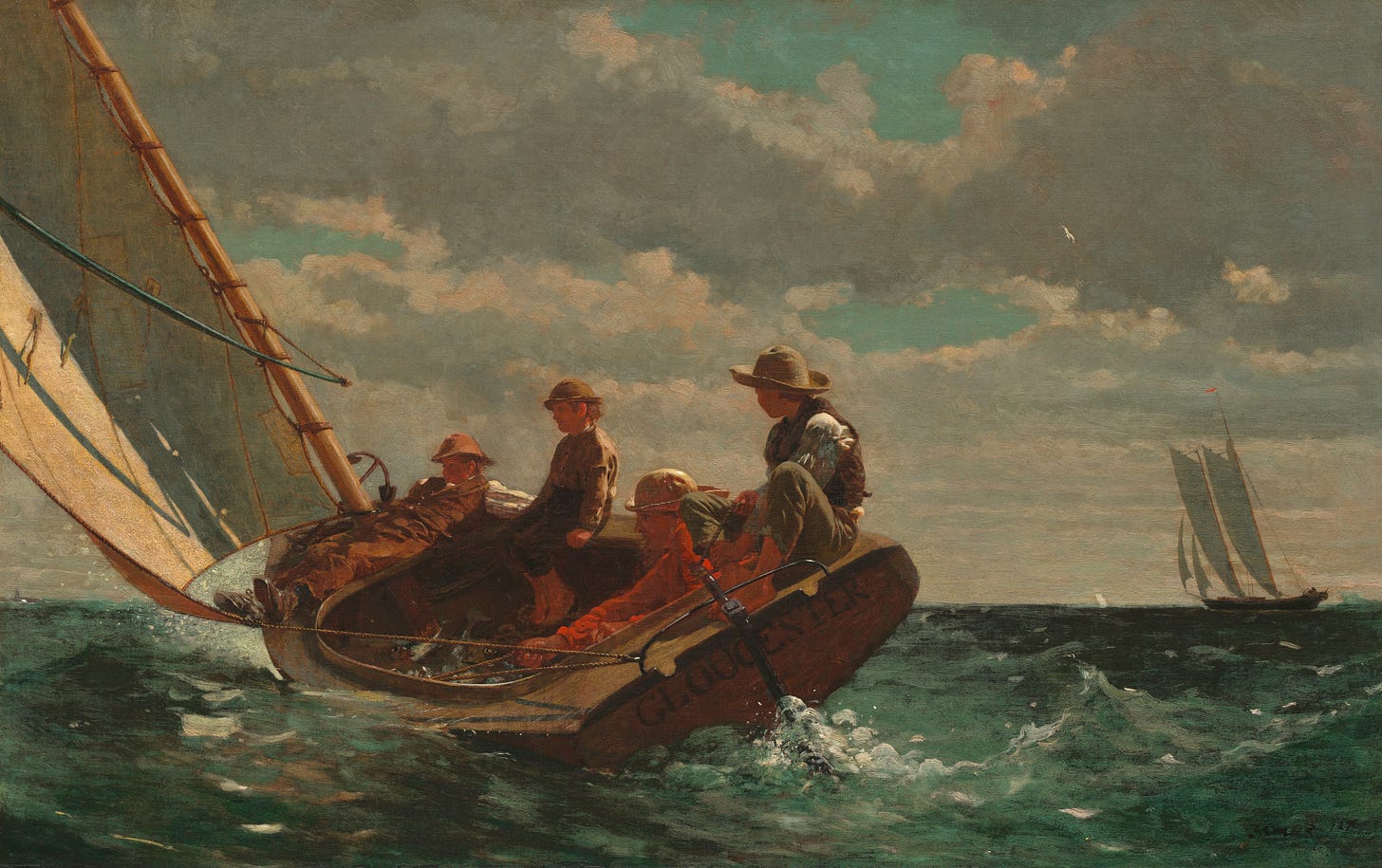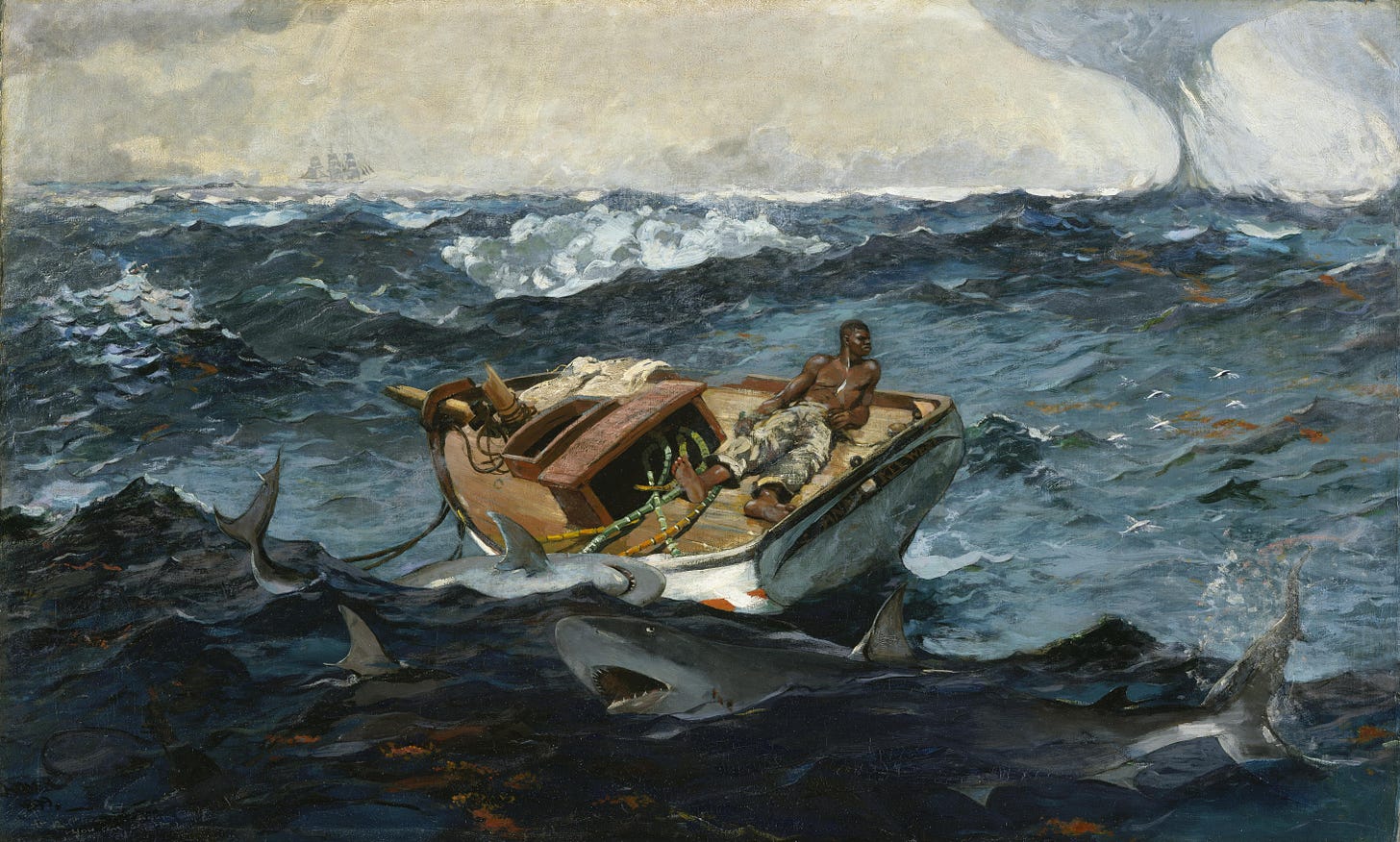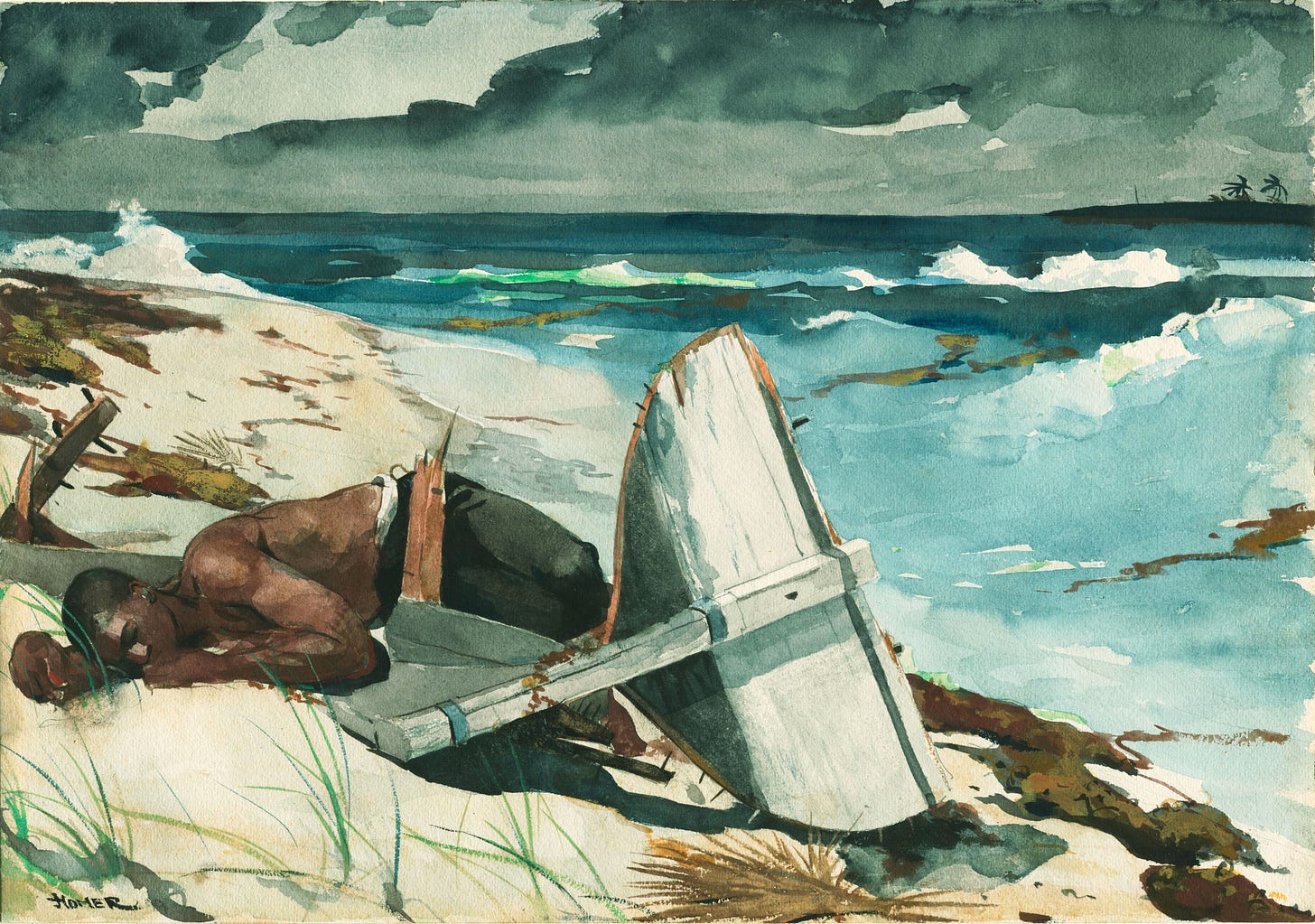Breezing Up a Fair Wind. Winslow Homer, 1873-1876
Winslow Homer knew the sea. In Breezing Up a Fair Wind he paints a father and his sons sailing in a bright moment. The catboat called the Gloucester chops along in the harbor. But as every sailor knows, the water can turn stormy — suddenly!
The Gulf Stream. — Winslow Homer, 1899
In the painting, The Gulf Stream, a small boat sits in the composition at a similar angle, but here the boat is bereft of mast and rudder. A lone man is stretched out on the deck. He is muscular, but he is helpless. Some art historians believe Winslow Homer is making a statement about the place of newly emancipated people in an uncertain world.
The boat is not riding the waves, but is in a risky position, parallel to the approaching waves. Any mariner will look at this painting and want to urge the craft bow-first into the surging swells. But there is no way for this man to do so. Is he resigned to his fate? Is he hopeful for a miracle?
Is Homer portraying the precarious place of those newly emancipated, yet still powerless to improve their situation? The painting, with its circling sharks and angry waterspout, would seem to give little hope.
After the Hurricane. — Winslow Homer, 1899
Fortunately Homer has painted what many think is a companion piece to The Gulf Stream, After the Hurricane. Here the same man lies unconscious on a beach as the storm has passed. He has indeed survived. Exhausted, he has reached the safety of land. Is it a message of hope for the future? I like to think so.





